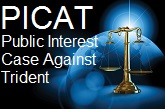by Helena Paul, Econexus
It is easy to overlook the violence implicit in many modern technologies; we so rapidly become used to them and many of us are never truly confronted with their violent aspects. The aim of this brief essay is to indicate some of the violence embedded in modern industrial agriculture. It will only touch on a few aspects, inviting readers to think further on the proposition. A whole essay could be written, for example, on the use of food as a weapon, when, for example, heavily subsidized grain is dumped on local markets in the global south in the guise of aid, but instead it destroys the livelihoods of local farmers. It’s worth remembering that Rafael Mariano, chairperson of the Peasant Movement of the Philippines, noted in 2000:
“Twenty-five years ago USDA Secretary Earl Butz told the 1974 World Food Conference in Rome that food was a weapon, calling it ‘one of the principal tools in our negotiating kit’”[i]
There are many other examples: the impacts of mechanisation and monocultures; the dependence on fossil fuel; the animal welfare and environmental impacts of the intensive pig industry in the US, Mexico, Poland, China and many other countries around the world;[ii] the impacts, particularly on women in the global south, of using pesticides without adequate advice or protective clothing; the suicides of farmers in many parts of the world that can be attributed to the multiple pressures of industrial agriculture and increasing corporate control; the impacts on forests and peoples of the rapid spread of industrial palm oil production in Asia and increasingly in Africa and Asia. Here we confine ourselves to first looking at a few of the actual links between research in agriculture and weapons and then move on to consider the destructive impacts of genetically modified herbicide tolerant crops, primarily soya, first introduced from 1995 onwards.
We begin briefly with language, as a key indicator. The language used by proponents of modern industrial methods frequently involves phrases such as ‘winning the war on pests’, ‘new weapons in the old war on pests’, ‘eliminating pests’, ‘waging war on weeds’. Metaphors are powerful shapers of thought, making it appear that agriculture is a constant war against nature, rather than collaboration with nature. The idea has deep roots in western culture, for example in Genesis where God says to Adam: ‘Cursed is the ground for thy sake, in sorrow shalt thou eat of it all the days of thy life. Thorns also and thistles shall it bring forth to thee…’ hardly an auspicious beginning to his new life outside the garden, for which agriculture is presented as a future war of attrition. When looking at the flattened and cowed landscapes of intensive farming or the long sheds in which thousands of animals, pigs, chickens, turkeys, cows, are locked away for brief and brutalized lives, the signs of violence become clearer. The metaphor is reinforced by the names given to chemicals used in these wars on pests, which include for example: fusillade, skirmish, bullet, revolver, rifle, striker, throttle, conqueror, broadside, invader.
From metaphor to reality: the link with war
Synthetic nitrogen
It is not only a metaphor, however; two of the main props of modern industrial agriculture, synthetic fertilisers and pesticides (both herbicides and insecticides) emerged from the two world wars of the twentieth century. Guano is the excrement, mainly of birds and bats. It is rich in nitrates and has probably been used as a fertiliser for hundreds of years by Andean peoples, whose Quechua name for it is the source of the word guano. In the 19th century, it became a major trade item, sourced from seabirds living on islands off the coast of South America, and was in high demand both as a fertiliser and as a basic ingredient in the manufacture of explosives. However, early in the twentieth century, the Germans realised that in the increasingly likely event of a war with Britain, they would be cut off from access to this essential ingredient for their war effort.
The German chemist Fritz Haber, meanwhile, had discovered a process for producing ammonia from atmospheric nitrogen that is still in use and still bears his name. The synthetic ammonia so produced was used for the production of nitric acid, used for making explosives and munitions in the absence of guano. The chemical company BASF purchased the process and employed Carl Bosch to scale up the process to industrial levels. By 1913 this had been achieved, using what is still the major source of nitrogen fertiliser, the Haber-Bosch process. Its hunger for energy means that currently it consumes some 3-5% of global natural gas production.[iii] The process continued to be used for weapons production until the end of World War 2, when the enormous stocks and production capacities developed for war efforts were turned to the application of synthetic nitrogen to the soil.
Since then the use of synthetic nitrogen fertiliser has expanded massively, with major negative impacts on the global nitrogen cycle. Unfortunately, most of the nitrogen applied is not actually taken up by the crops it is intended for. The excess runs off, polluting water and soil, destroying marine ecosystems (eutrophication) and creating multiple ‘dead zones’ such as that in the Gulf of Mexico. Unabsorbed nitrogen also becomes nitrous oxide, helping to make industrial agriculture a potent emitter of climate-forcing greenhouse gases, because the Global Warming Potential (GWP) of nitrous oxide is 310 times that of CO2.[iv]
It leads to elevated levels of ozone, with negative implications for human health and agricultural productivity. It also eliminates many soil microorganisms and their beneficial action, thus reducing the availability of other minerals in the soil. It has a negative effect on many useful wild plants and varieties of crop. At the same time it has enabled us to increase industrial agricultural production and led to the breeding of varieties that are actually dependent on high inputs of synthetic nitrogen. This in turn has helped to generate a major global livestock industry. 60% of EU cereal production is used as animal feed in an industry that is both unsustainable and inhumane.[v] A 2011 UN Food and Agriculture Organisation report said:
“When livestock are raised in intensive systems, they convert carbohydrates and protein that might otherwise be eaten directly by humans and use them to produce a smaller quantity of energy and protein. In these situations, livestock can be said to reduce the food balance.”[vi]
The implications are obvious: synthetic nitrogen is causing major damage to the ecosystems we all depend on, but the dominant model of industrial agriculture has become dependent on it and so therefore has our current energy dense model of development. It is just one of many factors indicating that we need a complete change of approach to agriculture. [vii]
Organophosphates
During the 1930s, a chemist working for the German conglomerate IG Farben, which counted Bayer and BASF among its member companies,[viii] began to experiment with the potential use of organophosphates as insecticides because of their lethal impact on the nervous system of insects. It was a short step from this to the realisation of their potential as chemical weapons, to which the research effort was then switched as war loomed. It should be noted that the British were also researching chemical weapons and later produced some lethal ones of their own. The German effort resulted in the production of several compounds, the best known of which is sarin. Although the Nazis did not employ them, they have since been used as chemical weapons several times by others, most recently in Syria. After the Second World War, US scientists used information they obtained about the German effort to produce organophosphate pesticides such as parathion and malathion. Even though these insecticides are less lethal to humans than sarin gas, they cause a wide range of symptoms including vomiting, breathlessness, dizziness, blurred vision, convulsions and coma.[ix] They are also endocrine disruptors and have been linked to neurological disorders such as Parkinsons disease.[x] Their acute toxicity is now well-recognised, but it took far longer for the impacts of low-level, long-term exposure to be acknowledged.
It is therefore disturbing to read that although it was recommended as early as 1951 in the UK that organophosphates should be labelled as deadly poison, containers were only labelled in 1976 and no directions or cautions about safe use were included. Later, during the 1980s and 1990s, many farm workers reported symptoms ranging from memory loss and depression to fatigue, joint and muscle pain and generalised weakness. They attributed this to low-level exposure to organophosphates over many years, especially through (mandatory) sheep dips. Soldiers returning from the Gulf War reported similar symptoms, subsequently called Gulf War Syndrome, but the Ministry of Defence has never acknowledged its existence as such. If the government were to acknowledge the problems, they would be exposed to claims for compensation both from victims and from the companies producing organophosphates for loss of market. They therefore say that they are safe if used properly, but there is little understanding of what ‘safe use’ really means. In 2012 a paper was published showing that organophosphates definitely do affect cognitive function, most obviously memory.[xi]
In December 2011, the Permanent Peoples Tribunal indicted six major pesticide producers, Monsanto, Dow Chemical, BASF, Bayer, Syngenta and Dupont for violating human rights to life and health, and destroying biodiversity.[xii]
Herbicides
2,4-D (2,4-Dichlorophenoxyacetic acid) was discovered during world War 2:
“ … when both United States and England scientists initiated secret biological warfare research on plant growth regulators with the objective of destroying enemy crops. Kraus at the University of Chicago had observed since 1936 that certain growth regulators were phytotoxic (28). Kraus was aware of the inadequacy of existing herbicides, and in 1941 he was first to propose that growth regulators might work as herbicides, because they often killed test plants.” [xiii]
Like its more potent relative, 2,4,5-T, 2,4-D is a synthetic auxin, or plant hormone that acts as a selective weedkiller.
“In November 1942, the United States Army began developing Camp Detrick (later renamed Fort Detrick) in Frederick, Maryland, as the center for research and testing of chemicals for biological warfare with special emphasis on crop destroying chemicals.”[xiv]
This research, authorised by the US Chemical Warfare Service, included investigating the use of 2,4-D and 2,4,5-T to destroy crops. [xv]
Later these two chemicals, produced by Monsanto and Dow Chemical, were used in combination as Agent Orange and massively sprayed in Vietnam to defoliate the forests; and they also had the effect of destroying small-scale agriculture. As we know now, the 2,4,5-T was contaminated with dioxin, leaving a terrible legacy of birth defects and disease.[xvi]
What is the impact today of these developments?
The above examples show in brief how the synthetic fertilizer and pesticides that are so crucial to modern industrial agriculture are linked with wars. It is now time to look at how industrial agriculture is currently affecting environments and people around the world. We confine our focus to the rolling out of genetically modified herbicide tolerant crops, mainly soya, mainly for animal feed and fuel, in South America and the US. GM soya, engineered to tolerate applications of glyphosate, the basic ingredient of RoundUp, Monsanto’s proprietary herbicide, is a product that has from the outset been dominated by that one company. The soya boom is driven by markets, mainly for animal feed, in the form of soya meal or cake, and biodiesel from soya oil. The demand for feed and fuel is apparently limitless as meat consumption and car ownership increase, so soya represents a rewarding investment, which helps to explain its extremely rapid spread.
South America: Herbicide tolerant crops in Argentina and Paraguay
The cultivation of herbicide tolerant crops in Argentina began in 1996 with GM soya and spread swiftly through the country.
“The model was based on the political decision that Argentina, which had once been the grain basket of the world and a producer of healthy and high-quality foods, would be transformed into a producer of animal forage, firstly, to provide fodder for European livestock, and then for livestock in China.”[xvii]
At first, herbicide tolerant crops seemed to simplify the farming process, especially for larger mechanised farms. Instead of skilful weed management plans, farmers simply applied massive quantities of the herbicide glyphosate, mainly from the air. Additionally, there were large pools of investors involved in driving GM soya production. Small farmers could not compete and many left or were driven off their land by armed groups using threats of violence that they were all too often able to carry out with impunity. Hundreds of thousands of people left the land for towns and cities. In this process, which is continuing, they lose their food sovereignty and become food insecure consumers, not producers; while people who remain in the countryside and the small towns find themselves bombarded from the air with increasingly complex mixtures of pesticides (both herbicides and insecticides), intended to combat the problem of growing weed resistance and other problems generated by the ‘simplified’ farming process. Although GM crops were promoted as a means to reduce levels of pesticides used, pesticide use in Argentina has increased massively, ‘from 9 million gallons (34 million liters) in 1990 to more than 84 million gallons (317 million liters) today’.[xviii]
In 2008, a group of towns that had experienced crop spraying and related impacts made a declaration that described the broad array of illnesses they consider to have been caused by the imposition of this agriculture model, including cancers, birth defects, disorders of the immune, hormonal and nervous systems.[xix] In 2010, following almost a decade of mounting evidence of harm and protests, a meeting of the Faculty of Medical Sciences from the National University of Cordoba called a first meeting for doctors working in the crop-sprayed towns in several provinces of Argentina was held, to examine and discuss the evidence.
“The physicians stressed that they have been serving the same populations, in general, for over 25 years, but what they found in recent years was quite unusual and strictly linked to systemic sprayings of pesticides. For example, Dr. Rodolfo Páramo, a Pediatrician and Neonatologist at the public hospital of Malabrigo, a Northern city in Santa Fe, highlighted the alarm he experienced when he found 12 cases of birth defects in newborns, out of 200 births per year in 2006. This situation is analogous with the 4 cases of stillbirths due to birth defects in the small town of Rosario del Tala, in Entre Ríos, both areas characterized by massive pesticide spraying.”[xx]
Since that meeting, reports of illness caused by agrochemicals have continued to accumulate, along with evidence of major failures to apply any rules about spraying, or to inform people about the dangers.
Unfortunately the fate of rural populations is increasingly invisible, due to ongoing urbanization processes, often forced, as we saw above.
“The consequences of the compulsive urbanisation which confuses urban living with supposed progress is responsible for marginalisation, social fragmentation, extreme insecurity, poor nutrition, rising levels of disease, people trafficking, aid programmes, and narco-power in the shanty towns.” [xxi]
The lack of political influence amongst the marginalized populations means that little action has so far been taken on their behalf. Their numbers are dwindling in a landscape of industrial monoculture crop production that needs almost no people. The impact of aerial sprayings of agrotoxics on local food production by small food providers still on the land has been equally serious, with the destruction of crops and animals and a range of health problems. The impacts on biodiversity, water courses, soil microflora and fauna, worms, frogs and other crucial elements of a functioning ecosystem are also intense, especially as aerial spraying is carried out without consultation or consideration of people or environment. This is the collateral damage of the agricultural war and it is not acceptable.
Meanwhile GM crops continue to expand in Argentina, covering some 24 million hectares, some two thirds of the total arable land available.
Paraguay
Paraguay has suffered similarly devastating impacts, starting a little later than Argentina.[xxii] Land distribution has long been hugely unequal. Soy production began in the 1970s, with many Brazilian farmers taking over large tracts of land. Gradually after 1996, GM soy seeds were smuggled in for planting until finally four varieties were approved in 2004. At that time, only 24% of soy producers were Paraguayan. Brazilian, German, Japanese and Mennonite producers, supplying agribusinesses including Cargill, Archer Daniels Midland and Dreyfus, made up the rest.[xxiii] Repression and displacement, often violent, of remaining rural populations, illness, falling local food production have all featured in this picture. Indigenous communities have been displaced and reduced to living on the capital’s rubbish dumps.
Forest loss in Argentina and Paraguay
Both Paraguay and Argentina have lost large areas of forest since 2004, with GM soy considered to be a major driver, accelerating a process that was previously much more gradual. Bulldozers with chains between them can clear vast areas very quickly and the investment going into the process has steadily increased - from the investment pools mentioned above and others. In South America, we are used to thinking mainly in terms of the Amazon rainforest, but Paraguay has lost nearly a million hectares and Argentina nearly 2 million hectares of forest since 2004 alone.[xxiv] The impacts of the loss of these unique and little-understood forests are many: biodiversity loss, including many endemic species found nowhere else, and displacement of indigenous peoples, some not previously contacted, to say nothing of impacts on soils and water, regional and local climate change and changes in rainfall. This is shortsighted destruction driven by short-term profits.
Brazil – the largest agrochemical user in the world
Brazil, Uruguay and Bolivia have been similarly affected by the spread of soy since 1970, greatly accelerated by GM soy starting in 1996. In a special interview, a Brazilian agronomist, Leonardo Melgarejo, who represents the Ministry of Agrarian Development at the country’s GMO regulatory body, makes a key point: that GM crops are weakening the social fabric that is essential if people are to be able to flourish in rural areas. One could extend this point and say that GM agriculture also weakens the environmental fabric on which we all depend. He also notes that Brazil, where GM crops are grown on 36 million hectares, has become the largest user of agrochemicals in the world. This might be good for business, but not for people. It is leading to a vicious circle of weed resistance requiring the use of ever more, and more toxic, herbicides. To address this, Brazil is now considering the introduction of a GM crop that tolerates 2,4-D (see below).[xxv]
Brazil was also until World Food Day 2013 (16th October) considering a bill that would overturn the national and international moratorium on Terminator technology, the name popularly given to Genetic Use Restriction Technologies (GURTs). The aim of this technology is to prevent seed from germinating. In some cases, the addition of a chemical is proposed to enable germination in order to produce a harvest, but saved seed will not grow, thus the nickname ‘suicide seeds’. The excuses given for developing such a technology are to prevent contamination by GM crops, and as a means to protect patents on crops, but it seems clear that the real purpose is to prevent seed saving.
This conclusion fits well with, for example, draft new EU seed legislation and the G8’s New Alliance on Food Security and Nutrition, which is designed to prevent the saving of what the latter calls ‘unimproved’ or unregistered seed. This strategy to prevent farmers and communities from saving, exchanging and breeding seed would outlaw many varieties informally bred and improved over millennia by farmers. Together with attempts to produce seed that cannot germinate, this is a clear example of violence as defined for the purposes of this essay, as it strikes against justice, equity, diversity, the right to food and the life of the seed itself.
The US – more of the same
Here, “RR crops [RoundUp Ready - resistant to Monsanto’s proprietary herbicide] were rapidly adopted because they provided farmers a simple, flexible, and forgiving weed management system…” as a result, herbicide use increased in the US by an estimated 239 million kg between 1996-2011 … “with HR [herbicide resistant] soybeans accounting for 70% of the total increase across the three HR crops [soya, maize, oilseed rape/canola]. Rising reliance on glyphosate accounted for most of this increase.”[xxvi] Gradually during this time, news of the appearance of several different kinds of weed resistant to glyphosate began to emerge, increasing year on year until now some 20-25 million hectares may be affected. The response has been to use older and more toxic herbicides such as 2,4-D in tank mixes of agrotoxics and to develop new ‘stacked’ GM seeds with several traits for resistance to different herbicides.
Proposing 2,4-D resistant crops, stacked crops and more
Now Dow Agrosciences, the company that originally produced 2,4-D, seeks to release genetically engineered soybean and corn resistant to 2,4-D in Brazil, Argentina and the US. In their petitions seeking ‘nonregulated’ status for these crops in the US[xxvii], they cite many problems with glyphosate.[xxviii] It is worth noting that 2,4-D, first marketed in 1944[xxix], is long out of patent protection. Producing a crop resistant to it opens up the opportunity, long exploited by Monsanto, to retain control of the system by creating packages of products and restrictive grower contracts that place the onus entirely on the grower, limiting the liability of the company, and increasing profits and control. Violation may lead to legal action and severe financial sanctions.[xxx] Dow’s proposed crops are stacked with traits for resistance to other herbicides as well, including glufosinate and glyphosate.[xxxi] Perhaps this is not surprising, considering that there are already weeds in the US that are resistant to 2,4-D.[xxxii] Monsanto is also producing genetically engineered seed stacked with multiple traits, notably resistance to the herbicides dicamba and glufosinate.[xxxiii] It is legitimate to ask how these new traits are meant to address weed resistance effectively, especially in the long term. It is estimated that releasing the 2,4-D products could increase the volume of herbicide sprayed, possibly by up to by 50%,[xxxiv] and 2,4-D has negative impacts on crops, ecosystems, animals and people.[xxxv] The same is true of dicamba.[xxxvi] Both are also implicated in the growing number of cases of pesticide drift and destruction of other farmers’ crops.
Conclusions: a paradigm shift is required
This essay has attempted to begin a process of reflection on the violence implicit in many aspects of modern industrial agriculture, the way this violence breeds further violence, and its consequences for us all. We have looked briefly at some instances of the close relations between research into weapons of war and agricultural weapons in the form of synthetic fertilisers, herbicides and insecticides. The description of fertiliser as a weapon might appear overstated, yet the multiple negative impacts of synthetic nitrogen fertiliser, hardly more than hinted at above, justify the description. The abiding image is one of seeking to dominate and control natural systems and compel them to comply with a certain model, using methods that are the property of commercial companies that derive large profits from their products. If a system of control should break down, this simply provides an opportunity to create or use a new product, creating a toxic treadmill. Thus the emergence of herbicide resistant weeds is an opportunity to which companies are responding by engineering crops with multiple traits and resistance to more herbicides, which in turn means farmers are applying more and more toxins, with impacts on us all.
The fact that we do not understand the complexities of the natural systems we are trying to control is rarely mentioned. We are repeatedly told that the only way forward is through upscaling industrial agriculture, and any other path leads to starvation. However, an increasing number of people, including scientists, are questioning that assumption, ranging from small-scale food providers to people who have been brought up inside an industrial food system and barely know anything different, but are troubled by what they see and feel.
Move away from agriculture as war on people and the land
The destruction of biodiverse ecosystems and indigenous cultures, the contamination of soil, water and air, the impacts on climate and the planetary nitrogen cycle, the impacts on human health and well-being, all to produce animal feed for industrial livestock and biofuel for cars, is surely a form of short term thinking we should all reject. So what are the alternatives? There are many: we all need to take far more heed of the sources of our food and recognise that small farmers around the world are still the main source of food for the human population, in spite of the pressures they face.[xxxvii] Instead of marginalising them and driving them off the land into slums, we should be developing policies to support them and the organisations that represent them, such as La Via Campesina, the international peasant movement that has 164 member organisations in 79 countries, representing some 200 million farmers around the world with a steadily increasing membership. [xxxviii]
Slowly but surely, support for diverse ways of farming other than industrial monocultures is strengthening around the world. Agroecological approaches to food production, which include organic farming, biodynamic agriculture and permaculture, have been constantly sidelined by the publicity around industrial approaches, despite their capacity for high yields. We are constantly told that inter-cropping, companion-planting and other mixed cropping systems are not viable because they are not amenable to large-scale mechanical production and nothing else is acceptable these days in developed countries, where no-one wants to get dirt under their fingernails.
Hopefully looking at the fundamental violence of the dominant system will contribute to accelerate this change in thinking. We need to marginalise industrial agriculture and food production and adopt agroecological approaches appropriate to different regions and cultures around the world. If we tackle the violence of modern industrial agriculture, we can also begin to tackle multiple injustices and major inequalities linked to it. We can more clearly reveal the cartels that dominate seed, chemicals, food processing and transport.[xxxix] We can also highlight the ‘collateral damage’ caused by this model of industrial agriculture, but it requires thought, action and commitment from each one of us.[xl]
[i] Quoted: Chapter 1 of Hungry Corporations, http://www.econexus.info/sites/econexus/files/ENx-HC-Ch1.pdf
[ii] http://www.pigbusiness.co.uk/
[iii] Wikipedia equates 3-5% natural gas with (~1–2% of the world’s annual energy supply) http://en.wikipedia.org/wiki/Haber_process
[iv]http://epp.eurostat.ec.europa.eu/statistics_explained/index.php/Glossary:CO2_equivalent
See also: Crutzen et. al (2008) ‘N2O release from agro-biofuel production negates global warming reduction by replacing fossil fuels’, Atmos. Chem. Phys. 8: 389-95, available at http://www.atmos-chem-phys.net/8/389/2008/acp-8-389-2008.html
[vi] World Livestock 2011: livestock in food security: UN Food and Agriculture Organisation, page 21, http://www.fao.org/docrep/014/i2373e/i2373e00.htm
[vii] Sources for nitrogen information include: http://www.motherjones.com/tom-philpott/2013/04/history-nitrogen-fertilizer-ammonium-nitrate
http://ngm.nationalgeographic.com/2013/05/fertilized-world/charles-text
http://e360.yale.edu/feature/the_nitrogen_fix_breaking_a_costly_addiction/2207/
[viii] http://en.wikipedia.org/wiki/IG_Farben, see also Hungry Corporations, chapter 3, http://www.econexus.info/publication/hungry-corporations
[xi] http://www.politics.co.uk/reference/organophosphates; Exposure to organophosphates harm memory, say scientists: http://www.fwi.co.uk/articles/03/12/2012/136539/exposure-to-organophosphates-harm-memory-say-scientists.htm
[xii] http://www.downtoearth.org.in/content/international-peoples-tribunal-indicts-monsanto-dow-chemical-and-others-pesticide-deaths-inj
[xiii] Phenoxy Herbicides Chapter 2, The History of 2,4-D and Its Impact on Development of the Discipline of Weed Science in the United States by Orvin C. Burnside, http://www.24d.org/abstracts/chapter2.pdf
[xiv] ibid
[xv] Archives Search Report Findings for Field Testing of 2,4,5-T and Other Herbicides, Fort Detrick: http://www.detrick.army.mil/responsible/ArchivalReport2012.pdf
[xvi] Agent Orange Victims Sue Monsanto by Tom Fawthrop, Special to CorpWatch
4.11. 2004: http://www.corpwatch.org/article.php?id=11638,
The Legacy of Agent Orange: http://home.clara.net/heureka/gaia/orange.htm
[xvii] From a letter to Pope Francis, April 2013 from Grupo Reflexion Rural, Argentina, English version: see item 2 at http://www.gmwatch.org/index.php/news/archive/2013/14881-cardinal-turkson-say-no-to-gmos
see also: Argentina: A Case Study on the Impact of Genetically Engineered Soya; www.econexus.info/publication/argentina-case-study-impact-genetically-engineered-soya
[xviii] Argentines link health problems to agrochemicals by Michael Warren and Natacha Pisarenko, Associated Press/Aurora Advocate, October 18, 2013: http://www.auroraadvocate.com/ap%20financial/2013/10/18/argentines-link-health-problems-to-agrochemicals
[xix] Declaration of Caroya. (2008, September 13). Retrieved from http://semillasdeidentidad.blogspot.com/2008/09/paren-de-fumigar.html
[xx] Report from the 1st NATIONAL MEETING OF PHYSICIANS IN THE CROP- SPRAYED TOWNS, 27-28.8.2010: http://www.reduas.fcm.unc.edu.ar/report-from-the-first-national-meeting-of-physicians-in-the-crop-sprayed-towns/
[xxi] From a letter to Pope Francis, April 2013 from Grupo Reflexion Rural, Argentina, English version: see item 2 at http://www.gmwatch.org/index.php/news/archive/2013/14881-cardinal-turkson-say-no-to-gmos
[xxii] See for instance: Paraguay Sojero by Grupo Reflexión Rural, Argentina http://www.grr.org.ar; document available at http://lasojamata.iskra.net/en/node/12
[xxiii] ibid and Soybean fever transforms Paraguay By Jane Monahan, Asuncion, Paraguay, 6th June 2005: http://news.bbc.co.uk/1/hi/business/4603729.stm
[xxiv] http://www.argentinaindependent.com/socialissues/environment/terra-i-mapping-latin-americas-disappearing-forests/
[xxv] http://www.ihu.unisinos.br/entrevistas/520591-a-transgenia-esta-mudando-para-pior-a-realidade-agricola-brasileira-entrevista-especial-com-leonardo-melgarejo
Google translation into English: http://bit.ly/15HNY1q
[xxvi] Impacts of genetically engineered crops on pesticide use in the U.S. — the first sixteen years: Charles M Benbrook: http://www.enveurope.com/content/24/1/24
[xxvii] http://www.aphisvirtualmeetings.com/24d_about.html
[xxix] www.pan-uk.org/pestnews/Actives/24d.htm
[xxx] example of a fairly typical grower agreement http://www.dowagro.com/na/usa/en/traitstwd/das_tech_use_agreement.pdf
[xxxii] Impacts of genetically engineered crops on pesticide use in the U.S. — the first sixteen years: Charles M Benbrook: http://www.enveurope.com/content/24/1/24
[xxxiv] Impacts of genetically engineered crops on pesticide use in the U.S. — the first sixteen years: Charles M Benbrook: http://www.enveurope.com/content/24/1/24
[xxxvii] see for example: http://www.twnside.org.sg/title2/susagri/2013/susagri276.htm
[xxxix] Agropoly: a handful of corporations control world food production (2013), http://www.econexus.info/publication/agropoly-handful-corporations-control-world-food-production
[xl] How to feed the world by Mark Bittman, 14.10.2013, http://www.nytimes.com/2013/10/15/opinion/how-to-feed-the-world.html?pagewanted=1&_r=1












 Nuclear weapons crime in the UK has been reported to Thames Valley Police.
Nuclear weapons crime in the UK has been reported to Thames Valley Police.










